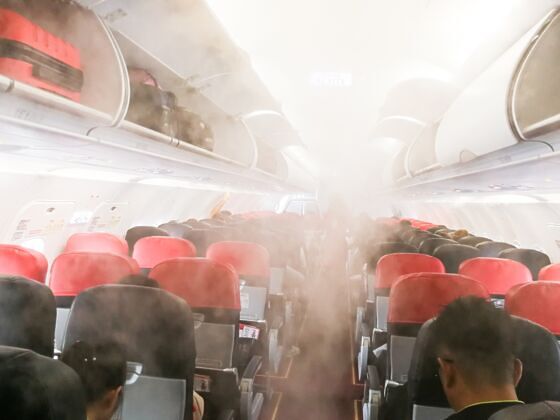One of my earliest travel memories is flying long haul for the first time to Thailand with my family. On departure, clouds of white “smoke” came down from the vents in the ceiling of the cabin. I asked my father what was happening. He replied, “It’s to kill the beasties,” which I’m sure he instantly regretted as he was bombarded with insistent questioning about where said insects were. He was wrong — in part. Yes, cabin crew commonly spray insecticide, but this was water vapor.


Why Planes Fill With White 'Smoke' When Leaving From Humid Places
But why does this happen, and what’s the science behind it? This Tiktok explains why mist or vapor fills an aircraft when taking off from humid places.
@_hennylim_ What is that white smoke inside the aircraft? Check out this video to know what it is! Trivia about aircrafts! Nice to know! #fyp #cabincrewlife #aircrafts #airconditioningunit #cebupacific ♬ Aesthetic – Tollan Kim
First of all, there’s no need to panic. It’s not smoke, and it’s very common.
It’s actually condensed water droplets. It occurs when there is a difference in temperature between the air inside the aircraft and the outside air at the humid airport.
When the airplane is grounded at a humid location, the air outside holds a lot of moisture as vapor, and because the interior uses air conditioning to keep the cabin comfortable, it mixes with the warm, humid air that seeped in before closing the doors. This causes the invisible water vapor to condense — similar to your breath on a cold day.
The mist is harmless and disappears quickly as the plane reaches cruising altitude, where the outside air is much colder. You’ll see this more often in hot, humid places or during summer months when the outside air is warm and holds more moisture.
Air conditioning plays a crucial role in ensuring a safe and comfortable flight. At an average cruising altitude, the air outside sits around -40 to -60°F. So, it perhaps goes without saying that air conditioning is vital to stop the cabin temperature from plummeting to uncomfortable and potentially dangerous levels. The system also pressurizes the cabin, ensuring adequate oxygen supply for passengers and crew, and removes carbon dioxide.